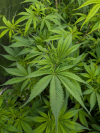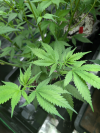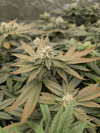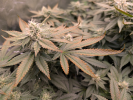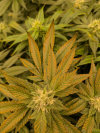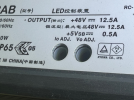I went through the PDF you shared, and while I can’t say I fully grasp the technical details in the first part of your reply, I think I understand the general idea. It sounds like you're saying that calibrating my PPFD meter at 3000K vs. 3500K wouldn’t really make much of a difference, and that you don’t believe light intensity is the main issue here. From what I gather, you’re leaning more toward overfeeding and/or VPD being the cause.
Sounds like my posting was more clear than the PDF.

I appreciate the feedback on the document. It's very cut and dried so perhaps more descriptive text would help.
The big drivers for converting lux to PPFD are that blue in the spectrum results in lower PPFD while more red raises PPFD. The conversion factors take that into account. HLG lights tend to be red heavy and the Growcraft flower light has a fair amount of red so the conversion factors will be higher than, say, the Rapid LED Royal Blue Puck.
A "standard" white LED has a conversion factor of 0.015. A blue heavy light will generate fewer photons so the conversion factor is a bit lower. The 4000k is 0.0144 while the 3000k will be 0.0146. That's a tiny difference so at 50k lux, it's 729µmol vs 719µmol. Again, a tiny difference on paper and insignificant in the real world.
I don't see excess light as being an issue because I'm not seeing the symptoms of leaves curling their edges, starting with the leaves closest to the light source and with that behavior diminishing further down the plant. The leaves are V shaped and there's been a history of nutrient imbalances and, it sounds like, some question about watering/feeding practices. Another unknown is VPD which is a major driver of how water, and therefore, nutrients move through the plant.
The symptoms that I see are leaf drooping (turgor) and interveinal chlorosis and I think that's an Mg issue which could be poor nutrient availability and/or poor nutrient uptake.
Since my last update, I turned off both the heater and humidifier. Before that, temps were around 80–82°F and RH stayed between 60–65%. After shutting them off, things dropped—just checked and I'm at 73°F with 45% RH, and a leaf temp of 69°F, which puts VPD around 1.1–1.2 kPa.
The plants do look a lot better, especially at the top. That's great.
With a 4° offset, you were previously down in the 0.7 to 0.8 range of VPD which is quite a bit low for a plant in early flower. Water flow is proportionate to VPD so your plants were only getting about ⅔ of the water (and nutrients) that were expected.
4° is fairly high. You've got some fans blowing in/across the canopy?
My most recent grow was -6 which I checked by getting a new IT gun (the AC Infinity model is excellent). After I calibrated it, I got the same -6 I had with my old, el cheapo.
Dropping PPFD will "solve the symptom" in that it will tend to reduce the activity level of the plant (transpiration, photosynthesis, and respiration). I can't say that I'd go as low as 300-400 but it is much better to have a temporary slow down in growth than to continue to stress the plant, especially in early flower.
Once things stabilize, you might want to get ambient temps up. From the Chandra paper on PPFD, temperature, and CO2 levels. At 73/23, photosynthesis is down to ~12µmol. If you can get that up into the low 80's you'll get almost a 50% increase in photosynthesis.
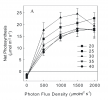
I also let the coco dry back a bit—probably not ideal, but I had been trying different things to get things back on track, and it’s actually looking better now. The tricky part is, I’m not sure which change made the difference.
Understand completely and that's the balance between trying one thing at a time, the troubleshooting process, or triaging it. I think you've made the right move. First step is to stabilize and you've done that. Give things a few days and you can start optimizing. If you've got a good notes in your grow journal, that can really help to backtrack and see where things went sideways.
Best thing, though, it that it looks like things are getting back on track.
I’ll admit, I’ve been a little hands-off with the veg tent lately because I’ve been focused on a more pressing issue in the flower tent that I still haven’t fully resolved. I’m honestly not sure why I bumped the light up 10% during a flush, but I did, and the very next day I noticed problems. I’ve since lowered it by 20%, but I still don’t know if it was the lighting, nutrients, VPD swings—or a mix of everything.
"up 10% during a flush, but I did, and the very next day I noticed problems." - hard to say. Correlation is no causation, right. Unless we do something really stoopid it can take a while for problems to crop up. A 10% change at 700-800µmol probably won't cause major issues like you had especially because cannabis vacuums up light.
My vote is "a mix of everything". But at least you got them out of the way all at once.
It might be a little hard to see in the pics, but the issue is mostly showing up toward the tops of the plants. The lower leaves don’t seem to be affected.
Understood.
Run this through chatGPT - "iin a cannabis grow, what might be the cause of interveinal chlorosis in the top leaves as well as the top leaves assuming a V shape and the leaves at the top drooping."


